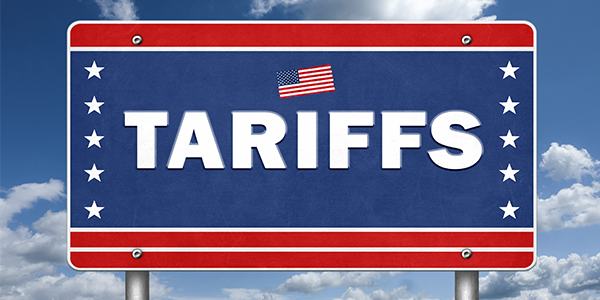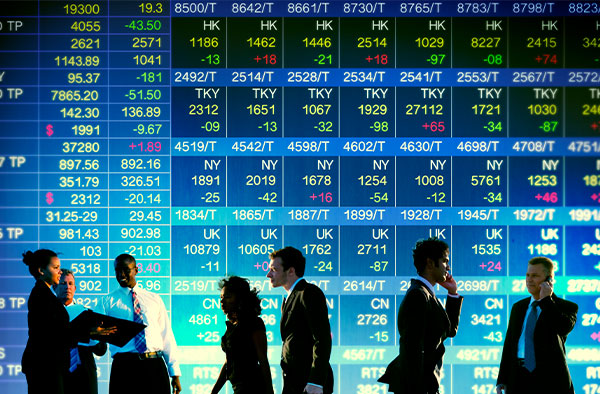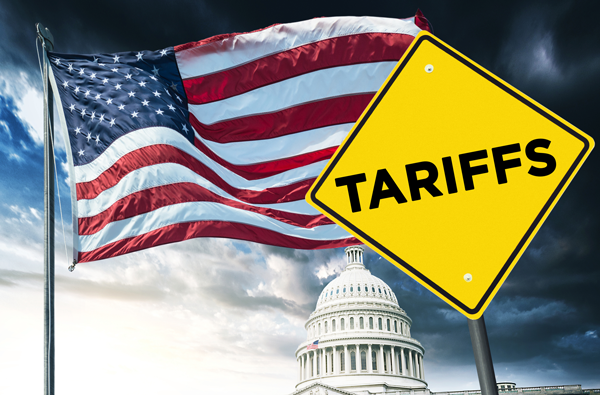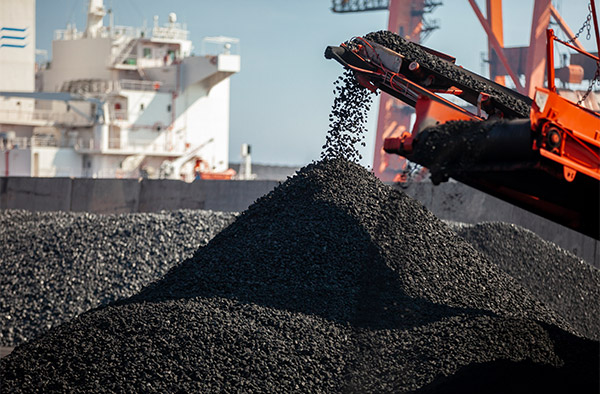
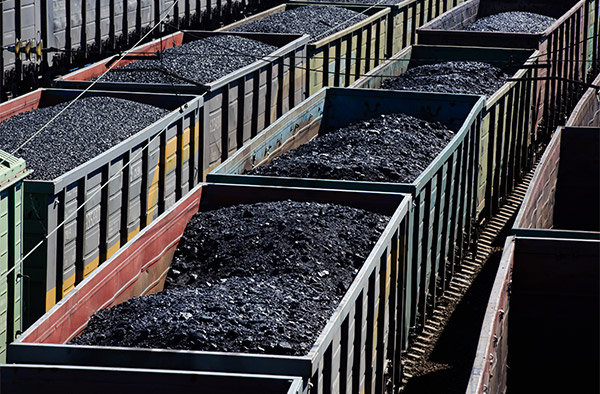
Trump Bets Big on Coal, But the Smart Money Is Watching Renewables
Between raising and lowering tariffs on imported goods, President Donald Trump made time this week to sign an executive order aimed at reviving America’s “beautiful clean coal industry.” The order outlines an ambitious strategy to reclassify coal as a critical mineral, reopen federal lands to mining, fast-track environmental reviews and provide federal support for coal-fired electricity and coal exports.
The move comes at a pivotal time. Demand for electricity is surging as the U.S. seeks to reindustrialize and build out new infrastructure to support artificial intelligence (AI) data centers, electric vehicles (EVs) and high-performance computing. According to S&P Global, the U.S. will see greater electricity demand growth in the next decade than in any ten-year period in history.

Shares of Peabody Energy—the largest U.S. coal producer, responsible for mining over 104,000 short tons in 2023—closed up 9.21% on Tuesday, its best one-day increase since November 6, 2024, the day after Trump won a second term. Over the longer term, however, Peabody’s stock has struggled, losing close to 60% of its value since Election Day.

I admire the president’s focus on strengthening U.S. energy security. Reliable, affordable power is the bedrock of economic growth and national competitiveness. While I understand his intent, I believe the long-term investment case is moving in a different direction—and it’s one that leans heavily toward renewables.
The Reality of Coal Economics
Coal is often described as a powerful energy source, and indeed it helped build the industrial age. But today, coal is struggling to compete on cost. The levelized cost of electricity (LCOE) for new coal plants is more than double that of solar, wind and natural gas, according to BloombergNEF. And that’s before factoring in the environmental and public health costs of coal extraction and combustion.
The simple truth is that coal is no longer the cheapest or cleanest option.

The market knows this. Coal’s share of power generation in advanced economies has been in steady decline since it peaked in 2007, according to the International Energy Agency (IEA).
In the U.S., coal fell below 15% for the first time ever in 2024, and the trend is accelerating. The Institute for Energy Economics and Financial Analysis (IEEFA) projects that the remaining 115,000 megawatts (MW) of coal capacity could be shuttered by 2040. Nearly a quarter of the existing U.S. coal fleet is already scheduled to retire by 2029.
Many of the plants still online are operating far below capacity. Reopening closed plants, or extending the lives of aging ones, is highly inefficient. Maintenance costs increase with age, and many units are now over 50 years old. The last large coal plant built in the U.S. came online in 2013, and since then, the pipeline has run dry.
A Global Shift
It’s no secret that the global energy makeup is transitioning. Coal generation hit a new record high in 2024, largely due to growth in emerging markets, but even in China and India, two of the world’s largest coal consumers, ambitious plans are underway to increase cleaner energy. China led the world in solar additions in 2024, while India is scaling up renewables to meet its growing energy needs.
The U.S. saw coal consumption fall 4% last year, on top of a 17% drop in 2023. Meanwhile, renewables are setting new records. Just last month, U.S. wind and solar generation hit an all-time high of 83 terawatt-hours (TWh), while fossil fuels’ share of the electricity mix fell below 50% for the first time ever.
It’s clear where the wind is blowing.

Follow the Smart Money
I believe this trend represents an attractive investment opportunity. Renewable capacity additions around the world surged by 25% last year, led by solar and wind. Solar alone is expected to account for more than half of all new generating capacity in the U.S. this year, with my home state of Texas leading the way. More than a third of all new solar panels is expected to be installed right here.
What’s even more compelling is that renewables are now cheaper not just than building new coal plants—they’re cheaper than operating most existing coal plants. According to Energy Innovation, 99% of U.S. coal plants could be replaced with new solar or wind at a lower cost.
AI and Data Centers
Again, I agree with President Trump that AI and data centers will be massive energy consumers in the coming years. As executive chairman of HIVE Digital Technologies, I should know. Between now and 2030, electricity consumption by data centers alone is set to more than double to an estimated 945 TWh. Pinning our hopes on coal to meet those needs is a backward-looking solution, I believe.
Coal may see a temporary boost from regulatory relief, and some investors may profit in the short term.
But in the long run, I think the writing is on the wall. The global transition to cleaner, cheaper energy is well underway. Investors who want to stay ahead of the curve should follow the data—and the money.

Index Summary
- The major market indices finished up this week. The Dow Jones Industrial Average gained 4.95%. The S&P 500 Stock Index rose 5.70%, while the Nasdaq Composite climbed 7.29%. The Russell 2000 small capitalization index gained 1.82% this week.
- The Hang Seng Composite lost 8.66% this week; while Taiwan was down 8.31% and the KOSPI fell 1.33%.
- The 10-year Treasury bond yield rose 49 basis points to 4.488%.
Airlines and Shipping
Strengths
- The best performing airline stock for the week was Boeing, up 14.8%. According to Planespotters data, Boeing is tracking to 42 deliveries for March, including 33 737 MAX and four 787s. March deliveries appear to be tracking to the company’s commentary that it would be approximately in line with February levels, where the company delivered 44 total aircraft including 31 MAX and five 787s.
- According to Goldman, COSCO Shipping Holdings reported first quarter 2025 preliminary results. The reported net profit was Rmb11.7bn (up 73% year-over-year) ahead of the company’s and consensus estimates of Rmb8-10bn. They attribute the result beat to better-then-expected cargo volume, a higher LT contract mix and contract rate for Asia-Europe routes as guided in previous corporate day, and lower costs e.g. bunker cost.
- Grupo Sureste Consolidated traffic came in up 12% year-over-year, with both international and domestic at positive 12% year-over-year. Goldman Sachs highlights that March traffic data came in up 22% month-over-month (in line with historical seasonality).
Weaknesses
- The worst performing airline stock for the week was JetBlue, down 5.8%. Frontier lowered guidance for first quarter financials, announced second quarter capacity cuts, and pulled fiscal year guidance. Management now expects revenue growth of 5% versus consensus of 13.8%, a pre-tax margin of -5% versus consensus of -1.2%, and a net loss per share between ($0.20) and ($0.24) versus consensus of ($0.04).
- Clarkson estimates that for Containers, 83% of U.S. port calls could be subject to tariffs, with this accounting for 3% of all port calls globally. Liners might respond via fewer U.S. port calls, creating congestion, and possibly a need to “rejig” routes, putting more non-Chinese-built ships on U.S. routes, creating disruptions, reports Morgan Stanley.
- Spirit Airlines’ CEO Ted Christie announced that he is stepping down from his position, effective immediately. His exit comes shortly after Spirit announced on March 12 that it had emerged from Chapter 11 proceedings and that the Company would “continue to be led by Ted Christie… and its existing executive team”, according to Morgan Stanley.
Opportunities
- Republic Airways and Mesa Air Group will combine in an all-stock transaction. Republic Airways has a fleet of more than 240 Embraer 170/175 aircraft and carried 17.5 million passengers. Pro forma net leverage at close is expected to be 2.5x and liquidity as a percent of pro forma revenues is expected to be greater than 15%. The post-merger company will maintain a single fleet of 310 Embraer 170/175 aircraft, with over 1,250 daily departures.
- No major liners have returned to the Red Sea and Linerlytica believes it is reasonable to assume it is closed for much of 2025. However, pay attention to the pressure from +5-8% supply additions if the Red Sea reopens.
- Airline stocks traditionally lose 40% of their value over six months leading into recession before doubling from there, reports JP Morgan. Airline revenue momentum typically reverses 14 points at the trough, then recovers. A strategy of buying 40% pullbacks into recessions (ex-9/11) has historically resulted in outsized gains, JP Morgan goes on to explain.

Threats
- If fuel goes down to $2.25 per gallon on average, that means a 14-point revenue reversal for the full year would merely result in break-even for Delta Air Lines and United Airlines, says JP Morgan.
- According to Linerlytica, U.S. container importers face an effective blended tariff of over 36%, and container shipping could lose 2.5% of global trade for every 10% loss of U.S. imports – with larger impacts if global macro is also impacted by the trade war. Linerlytica is already seeing evidence of transpacific shipment cancellations and is forecasting world container trade to decline by an average of 2% year over year in the coming quarters.
- JP Morgan laid out the ‘worst case’ scenario, in modelling an outsized premium revenue decline versus economy. This generates 30-40% year-over-year EBIT declines for 2025E for easyJet, Ryanair and IAG, with Lufthansa just above breakeven, and AF-KLM and Wizz loss-making. The sector has been down by 20% over the past month. In JP Morgan’s view, the market is therefore not pricing in a worst-case scenario.
Luxury Goods and International Markets
Strengths
- Carnival Corporation reported record earnings for the first quarter of 2025, with revenue reaching $5.8 billion, surpassing previous guidance. Additionally, Carnival Cruise Line announced plans for three new megaships, each capable of carrying almost 8,000 passengers, to be delivered in 2029, 2031 and 2033.
- Tesla recently announced its preparation to enter one of the largest auto markets, India, and this week the company officially launched its operations with a showroom opening in Riyadh on April 10. Additional showrooms in Jeddah and Dammam are scheduled to open on Friday, April 11.
- Cettire, an online marketplace for luxury goods based in Australia, was the top-performing stock in the S&P Global Luxury sector, posting a 14.3% increase over the past five days. Shares rebounded from a record low despite no apparent news catalyst.
Weaknesses
- As of March, China’s Consumer Price Index (CPI) remained weak, signaling continued sluggish domestic demand and continued deflationary pressures in the economy. The CPI declined 10 basis points from a year ago, reflecting cautious consumer spending and ongoing economic challenges.
- Eric Vallat, the CEO of Rémy Cointreau, will step down this summer after leading the company for over five years in a challenging market. During his tenure, the company faced difficulties, including anti-dumping measures in China, which led to temporary import duties on the French brandy. Under Vallat’s leadership, Rémy Cointreau’s shares have dropped by 64%, reports Bloomberg.
- RealReal, an online marketplace in the Unted States, was the worst-performing stock in the S&P Global Luxury Index, dropping by 5.8% over the last five days.
Opportunities
- Despite the ongoing global tariff wars, Prada is nearing the completion of its purchase of Versace from Capri Holdings for approximately 1.25 billion euros. The company is negotiating a discount of more than $200 million due to the adverse effects of the trade tensions. Once the acquisition is finalized, Prada is expected to be in a stronger position to compete with major luxury brands like LVMH and Kering.

- Bloomberg Intelligence estimates that Ferrari could earn approximately €119,000 in profit per car this year, nearly eight times more than Porsche is projected to make, per vehicle. This growing disparity highlights the strength of Ferrari’s ultra-luxury business model and its relatively lower exposure to the Chinese market.
- Constellation Brands is shifting its focus toward premium wines by selling several of its mainstream wine brands—such as Woodbridge, Meiomi, Robert Mondavi Private Selection, Cook’s, Simi, and J. Rogét sparkling wine—to The Wine Group, aligning with its broader strategic realignment.
Threats
- Deutsche Bank Research revised its ratings on luxury goods companies Hermes, Richemont and Kering, and cut its growth forecasts for the luxury sector due to increased U.S. consumer demand volatility, geopolitical risks and shrinking global wealth. Richemont and Kering were downgraded to a Hold rating, while Hermes was upgraded to a Buy rating. Hold recommendations on LVMH and Moncler were retained.
- Investors have experienced heightened market volatility, with significant fluctuations mostly driven by tariff-related news. On Wednesday, equities rose after President Donald Trump announced a 90-day pause on tariffs and reduced reciprocal tariffs to 10%. However, he also raised the tax on imports from China into the United States to 125%. The market may continue to face increased volatility moving forward.
- According to analysts, the ongoing tariff war has raised the likelihood of a global recession. During a recession, consumer confidence declines, and spending becomes more cautious compared to periods of strong economic growth. American consumers, who have been the primary drivers of growth in the luxury market, will face higher prices for luxury goods due to a 20% original tariff on European Union imports imposed by Trump. UBS estimates that, to offset these new levies, the cost of European luxury products will need to rise by an average of 6%.

Energy and Natural Resources
Strengths
- The best performing commodity for the week was gold, rising 9.35%. Gold prices surged to a record high of over $3,200 an ounce as investors sought safe-haven assets amidst the escalating trade war and economic uncertainty. Central bank buying and expectations for Federal Reserve monetary easing have further propelled gold’s rally this year, Bloomberg reports.
- U.S. natural gas inventories are entering injection season below the five-year average, with an improving demand outlook and continued supply discipline by producers. CIBC believes the emphasis on returning capital to shareholders lifts the mid-cycle price required for production growth. They also believe lower oil prices could limit associated gas production growth from liquid-rich basins such as the Permian.
- According to Morgan Stanley, following the European steel safeguard quota reset on April 1, preliminary European customs data is pointing to the lowest import run-rate in over two years. This suggests that the new safeguard regime may be more effective than its predecessor, despite the market’s disappointment at the smaller-than-expected reduction in overall quotas.
Weaknesses
- The worst performing commodity for the week was natural gas, dropping 4.43%. Natural gas prices experienced a weekly decline as the potential for increased global supplies emerged from the U.S.-China trade war, while in Europe, prices were pressured by discussions on flexible gas reserve targets, Bloomberg explains. Despite the decline, long-term indicators are stable as Adnoc considers a $9 billion investment in U.S. natural gas assets, suggesting confidence in future demand.
- The UK Parliament has been recalled for an emergency debate on Saturday to discuss the potential nationalization of British Steel, following failed talks with its Chinese owner, Jingye Group, Bloomberg reports. This move aims to protect the Scunthorpe blast furnaces and preserve the UK’s last virgin steelmaker, averting thousands of job losses and preventing the country from becoming the only G7 nation without primary steel-making operations.
- UBS’s weekly refining margins tracker came in lower last week as the market assesses potential tariff implications for the global economy and oil demand. The average margin was at $4.22 per barrel, -$0.77 per barrel this week. Only gasoline across the barrel posted an increase of $0.95 per barrel to $12.65 per barrel.
Opportunities
- Bank of America is calling for a significant recovery in 2026E for uranium. With increasingly limited supply of uranium in all forms, the bank thinks U.S. utilities will turn to purchasing uranium via the spot and term markets, which means fundamentals in the medium to long-term remain very robust. They are increasing the long-term price to $65 per pound on further input cost inflation.

- Bloomberg reports that Chinese copper buyers significantly increased purchases on Monday after prices collapsed to below $8,500/t, with LME copper volumes reaching their highest level since 2016. Copper prices collapsed by as much as 7.7% within 15 minutes of market open yesterday, before reversing direction to rally nearly $1,000/t in around two hours as Chinese traders and fabricators rushed to benefit from cheap international prices after months of elevated prices due to US tariff frontloading, causing the largest intraday move since 2009.
- Today, the land where Rick Clark grows corn, soybeans and alfalfa is fully organic and free of all chemical inputs. More producers will start to follow suit. Robert F. Kennedy Jr. has long advocated for American growers to curb their reliance on certain chemicals to grow and protect crops, claiming they can be toxic, according to Bloomberg.
Threats
- America’s solar industry has a strategy for dulling U.S. tariffs: hoard. Developers have been amassing piles of solar panels for more than a year, in part because of other U.S. levies imposed before President Donald Trump took office in January. The stockpile is now so big that analysts estimate there is roughly 50 gigawatts worth of the equipment in warehouses, Bloomberg reports.
- Trend-following funds are set to pile more pressure on commodities markets over the course of this week, according to Energy Aspects Ltd. Commodity trading advisors, or CTAs, are set to sell almost $6 billion of commodities products every day this week, according to Nicky Ferguson, head of analytics at the London- based researcher.
- Assuming a typical U.S. recession and Goldman’s OPEC baseline, the group estimates that Brent would decline to $58/50 by Dec25/26, respectively. In a global GDP slowdown scenario and keeping its OPEC baseline unchanged, Goldman estimates that Brent would decline to $54/45 by Dec25/26. Finally, in a more extreme and less likely scenario with both a global GDP slowdown and a full unwind of OPEC+ cuts, which would discipline non-OPEC supply, they estimate that Brent would fall just under $40/barrel in late 2026.
Bitcoin and Digital Assets
Strengths
- Of the cryptocurrencies tracked by CoinMarketCap, the best performer for the week was Onyxcoin, rising 175%.
- Bitcoin surged as much as 7.7% after President Donald Trump announced a pause on reciprocal tariffs on dozens of non-retaliating countries, Bloomberg reports. Smaller cryptocurrencies like XRP and Solana gained more than 11%, while Ether also turned higher after Trump’s announcement.
- The U.S. Senate confirmed Paul Atkins as chair of the U.S. Securities and Exchange Commission in a 52-44 vote. Atkins is expected to scale back regulation, reduce corporate disclosures, and make SEC rules friendlier toward cryptocurrency companies. Atkins will lead a leaner agency, as at least 500 SEC employees have taken deferred resignation and buyout offers to leave the regulator, writes Bloomberg.
Weaknesses
- Of the cryptocurrencies tracked by CoinMarketCap, the worst performer for the week was EOS, down 22%.
- Bitcoin’s price swung sharply, dropping 1.3% to $76,046 after an earlier 1.1% gain, as crypto traders reacted to market turmoil driven by U.S. trade tariffs. Some expect continued volatility, eyeing key support near $65,000, while others highlight Bitcoin’s appeal as a hedge in global uncertainty.

- Since President Trump announced his global tariffs last week, the price of Bitcoin has plunged 10%, dropping below $78,000 on Sunday night. In January, Bitcoin reached a record of nearly $110,000 on the day that President Trump was inaugurated, Bloomberg reports.
Opportunities
- Billionaire Michael Novogratz’s crypto firm, Galaxy Digital Holdings, has secured approval for a direct listing on the Nasdaq exchange, with trading set to begin soon after a special shareholder meeting.
- The U.S. Justice Department will limit its cryptocurrency crime investigations to focus on cases related to terrorism, drug cartels, victimizing investors, and other specific categories. The department will no longer target virtual currency exchanges, mixing and tumbling services, and offline wallets for unintentional violations of regulations, according to Bloomberg.
- Trump’s tariffs have made the stock market more volatile than Bitcoin—a rare shift, Bloomberg reports. Unlike major U.S. equities, Bitcoin remains largely unaffected, supported by moderate leverage and crypto-friendly regulations.
Threats
- Block Inc. was fined $40 million by the New York Department of Financial services for alleged anti-money-laundering inadequacies and cryptocurrency compliance failure on its Cash App platform, reports Bloomberg. The company failed to conduct adequate due diligence on customers, monitor and report suspicious transactions.
- Artificial intelligence and cryptocurrency mining data centers—powered by massive amounts of electricity—would face fees if they exceed new federal greenhouse gas emission limits, under Democratic legislation introduced Friday in the Senate, according to Bloomberg.
- European authorities shut down a large pedophile platform, Kidflix, that allowed users to pay with cryptocurrencies. The platform had 1.8 million users worldwide with 72,000 videos on its server and led to the identification of 1,400 suspects and 79 arrests, writes Bloomberg.

Defense and Cybersecurity
Strengths
- President Trump has proposed a record $1 trillion U.S. defense budget for the next fiscal year—an increase of nearly 12%—aimed at boosting military capabilities.
- India has approved a $7.4 billion deal to buy 26 French Rafale marine fighter jets—22 single-seaters and 4 trainers. The goal is to strengthen its naval air power aboard the INS Vikrant and reduce reliance on Russian arms amid rising tensions with China.
- The best performing stock in the XAR ETF this week was Aerovironment Inc., rising 31.06%. Raymond James upgraded the stock by two notches to a Strong Buy, citing undervalued valuation, rising demand, and the strategic Blue Halo acquisition.
Weaknesses
- TSMC is under investigation by the U.S. Department of Commerce for allegedly violating export controls, potentially facing a fine exceeding $1 billion, which could impact U.S.-Taiwan trade relations.
- The Office of the Comptroller of the Currency and the U.S. Treasury deemed a year-long email breach affecting 100 bank regulators a “major incident.” Hackers accessed highly sensitive financial data, prompting promises of accountability from officials.
- The worst performing stock in the XAR ETF this week was Triumph Group, declining 1.55% due to volatility.
Opportunities
- Palantir and Anduril Industries signed a partnership to use defense data for AI training in national security systems, marking an expansion of AI technology in military applications.
- President Trump signed an executive order to review and potentially ease U.S. military equipment export rules, which could significantly boost sales for major defense contractors like Boeing by addressing inefficiencies in the approval process.
- Kongsberg Aviation Maintenance Services and Slovakia’s LOTN have signed a teaming agreement to establish an F-16 MRO hub in Trenčín, Slovakia, leveraging their combined expertise to support both new and legacy F-16 fleets for NATO and Allied operators.

Threats
- Russia plans to allocate 8.4 trillion rubles to its navy over the next decade, though specific naval expenditures for last year are not detailed in the available sources. However, in 2024, Russia’s total military spending was approximately 13.1 trillion rubles.
- The Pentagon announced the cancellation of a major HR project involving Oracle and Leidos, which was significantly over budget and delayed, leading to a drop in Oracle and Leidos stock prices.
- Over 16 people were killed and 25 injured after Sudan’s paramilitary RSF shelled a displacement camp in El Fasher, as the group also claimed control of Um Kadada amid ongoing conflict with the national army.
Gold Market
This week gold futures closed at $3,251.70, up $278.10 per ounce, or 9.35%. Gold stocks, as measured by the NYSE Arca Gold Miners Index, ended the week higher by 19.90%. The S&P/TSX Venture Index came in up 8.53%. The U.S. Trade-Weighted Dollar fell 3.27%.
Strengths
- The best performing precious metal for the week was gold, up 9.35%. According to RBC, Regis Resources pre-released third quarter gold production of 90,000 ounces, driven by a 25% beat at Tropicana. Fiscal year 2025 year-to-date-rate of 381,000 ounces is tracking well versus the 350-380,000-ounce guidance.

- The World Gold Council released its central bank gold statistics for February 2025, which showed global central bank net purchases for the month totaling 24 tons. Top central bank purchasers were the National Bank of Poland (29 tons), the People’s Bank of China (5 tons), and the Central Bank of the Republic of Türkiye (3 tons).
- Aris Mining reported first-quarter 2025 gold production of 54,763 ounces, an 8% increase year-over-year, driven by positive trends at both the Segovia and Marmato operations. The company is on track to meet its full-year production guidance of 230,000 to 275,000 ounces, with further growth anticipated following the commissioning of the expanded Segovia processing facility in the second quarter of this year.
Weaknesses
- The worst performing precious metal for the week was Palladium, still up 2.25%. Palladium prices have stalled due to tariff-related risk aversion, with Commerzbank reducing its year-end price forecasts to $1,000 per troy ounce for both palladium and platinum. Uncertainty over U.S. tariff policy is likely to negatively affect demand, particularly from the automotive industry due to tariffs on cars and car parts, reports Commerzbank.
- According to JP Morgan, PGMs have seen the bottom but bumpy path from here. Over the medium to longer term, they continue to see: slower BEV adoption and a PGM basket price that has traded at close to cost curve support.
- Osisko announced preliminary GEOs of 19.0k ounces, a bit below their expectations of 21.4k ounces for the quarter, reports BMO. Overall, revenues for the first quarter 2025 were $54.9 million while cost of sales, excluding depletion, was $1.6 million.
Opportunities
- Gold equities at spot gold are trading in line with the one-year historical average P/NAV, but larger discounts versus longer-term historical levels, according to RBC. At spot gold prices, equities are trading at 0.99x P/NAV. On a one-year basis, the sector traded at an average 1.06x, or 1.26x on a three-year basis.
- As market disorder increases, gold is emerging as a haven, decoupling from its traditional inverse relationship with U.S. real yields, according to Bloomberg. In an environment where Treasuries and the dollar are behaving erratically, gold’s appeal transcends traditional barriers, attracting broader demand, including central bank buying, as central banks around the world have continued to buy.
- New Gold announced the acquisition of the remaining 19.9% free cash flow interest (FCF) in New Afton held by the Ontario Teachers’ Pension Plan for $300 million, with New Gold controlling 100% of the mine on deal close. The company previously acquired 26% of the FCF interest in the mine for $255m in May 2024 with gold 20% lower at $2,400 per ounce, explains RBC.
Threats
- Barrick Gold Corp. has approved plans to develop the Reko Diq copper-and-gold project in Pakistan, subject to the closure of a $3 billion funding package. The miner owns a 50% stake in the project, which is one of the world’s largest untapped sources of copper and gold. The remaining stakes are held by the governments of Pakistan and Balochistan, a remote province of Pakistan bordering Afghanistan and Iran, where the project is located, according to Bloomberg.
- Spikes in gold industry margins in both 2011 and 2020 were associated with negative total equity returns over the following three-year period. This is largely what Morgan Stanley would expect from the cyclical commodity sector.
- The surge in the gold-to-silver ratio signals growing recession fears, underscoring a potential threat to stocks as the ratio’s increases have historically coincided with U.S. recessions, Bloomberg explains. Gold’s outperformance, driven by its haven appeal amid trade tensions, suggests further upside potential for the ratio, adding to headwinds for stocks.


U.S. Global Investors, Inc. is an investment adviser registered with the Securities and Exchange Commission (“SEC”). This does not mean that we are sponsored, recommended, or approved by the SEC, or that our abilities or qualifications in any respect have been passed upon by the SEC or any officer of the SEC.
This commentary should not be considered a solicitation or offering of any investment product. Certain materials in this commentary may contain dated information. The information provided was current at the time of publication. Some links above may be directed to third-party websites. U.S. Global Investors does not endorse all information supplied by these websites and is not responsible for their content. All opinions expressed and data provided are subject to change without notice. Some of these opinions may not be appropriate to every investor.
Holdings may change daily. Holdings are reported as of the most recent quarter-end. The following securities mentioned in the article were held by one or more accounts managed by U.S. Global Investors as of (03/31/2025):
Regis Resources
Aris Mining
Osisko
New Gold
Barrick Gold Corp.
Boeing
COSCO Shipping Holdings
Frontier Group Holdings
Embraer SA
Delta Air Lines
United Airlines
easyJet PLC
Ryanair Holdings
Deutsche Lufthansa AG
Constellation Brands
LVMH
Kering
Prada
Remy Cointreau
Tesla
Carnival Corporation
TSMC
Kongsberg
Leidos Holdings
*The above-mentioned indices are not total returns. These returns reflect simple appreciation only and do not reflect dividend reinvestment.
The Dow Jones Industrial Average is a price-weighted average of 30 blue chip stocks that are generally leaders in their industry. The S&P 500 Stock Index is a widely recognized capitalization-weighted index of 500 common stock prices in U.S. companies. The Nasdaq Composite Index is a capitalization-weighted index of all Nasdaq National Market and SmallCap stocks. The Russell 2000 Index® is a U.S. equity index measuring the performance of the 2,000 smallest companies in the Russell 3000®, a widely recognized small-cap index.
The Hang Seng Composite Index is a market capitalization-weighted index that comprises the top 200 companies listed on Stock Exchange of Hong Kong, based on average market cap for the 12 months. The Taiwan Stock Exchange Index is a capitalization-weighted index of all listed common shares traded on the Taiwan Stock Exchange. The Korea Stock Price Index is a capitalization-weighted index of all common shares and preferred shares on the Korean Stock Exchanges.
The Philadelphia Stock Exchange Gold and Silver Index (XAU) is a capitalization-weighted index that includes the leading companies involved in the mining of gold and silver. The U.S. Trade Weighted Dollar Index provides a general indication of the international value of the U.S. dollar. The S&P/TSX Canadian Gold Capped Sector Index is a modified capitalization-weighted index, whose equity weights are capped 25 percent and index constituents are derived from a subset stock pool of S&P/TSX Composite Index stocks. The NYSE Arca Gold Miners Index is a modified market capitalization weighted index comprised of publicly traded companies involved primarily in the mining for gold and silver. The S&P/TSX Venture Composite Index is a broad market indicator for the Canadian venture capital market. The index is market capitalization weighted and, at its inception, included 531 companies. A quarterly revision process is used to remove companies that comprise less than 0.05% of the weight of the index, and add companies whose weight, when included, will be greater than 0.05% of the index.
The S&P 500 Energy Index is a capitalization-weighted index that tracks the companies in the energy sector as a subset of the S&P 500. The S&P 500 Materials Index is a capitalization-weighted index that tracks the companies in the material sector as a subset of the S&P 500. The S&P 500 Financials Index is a capitalization-weighted index. The index was developed with a base level of 10 for the 1941-43 base period. The S&P 500 Industrials Index is a Materials Index is a capitalization-weighted index that tracks the companies in the industrial sector as a subset of the S&P 500. The S&P 500 Consumer Discretionary Index is a capitalization-weighted index that tracks the companies in the consumer discretionary sector as a subset of the S&P 500. The S&P 500 Information Technology Index is a capitalization-weighted index that tracks the companies in the information technology sector as a subset of the S&P 500. The S&P 500 Consumer Staples Index is a Materials Index is a capitalization-weighted index that tracks the companies in the consumer staples sector as a subset of the S&P 500. The S&P 500 Utilities Index is a capitalization-weighted index that tracks the companies in the utilities sector as a subset of the S&P 500. The S&P 500 Healthcare Index is a capitalization-weighted index that tracks the companies in the healthcare sector as a subset of the S&P 500. The S&P 500 Telecom Index is a Materials Index is a capitalization-weighted index that tracks the companies in the telecom sector as a subset of the S&P 500
The Consumer Price Index (CPI) is one of the most widely recognized price measures for tracking the price of a market basket of goods and services purchased by individuals. The weights of components are based on consumer spending patterns. The Purchasing Manager’s Index is an indicator of the economic health of the manufacturing sector. The PMI index is based on five major indicators: new orders, inventory levels, production, supplier deliveries and the employment environment. Gross domestic product (GDP) is the monetary value of all the finished goods and services produced within a country’s borders in a specific time period, though GDP is usually calculated on an annual basis. It includes all private and public consumption, government outlays, investments and exports less imports that occur within a defined territory.
The S&P Global Luxury Index is comprised of 80 of the largest publicly traded companies engaged in the production or distribution of luxury goods or the provision of luxury services that meet specific investibility requirements.
The S&P 500 Energy comprises those companies included in the S&P 500 that are classified as members of the GICS energy sector.












